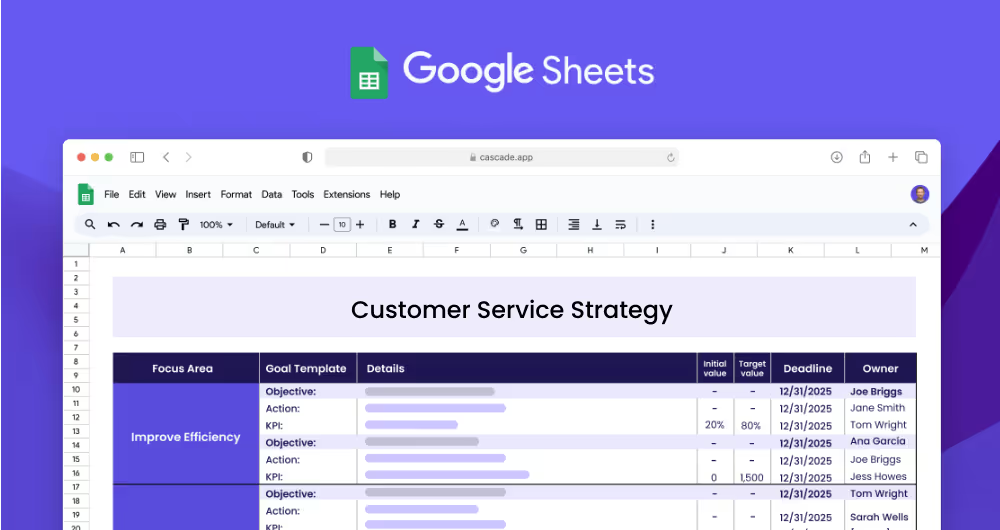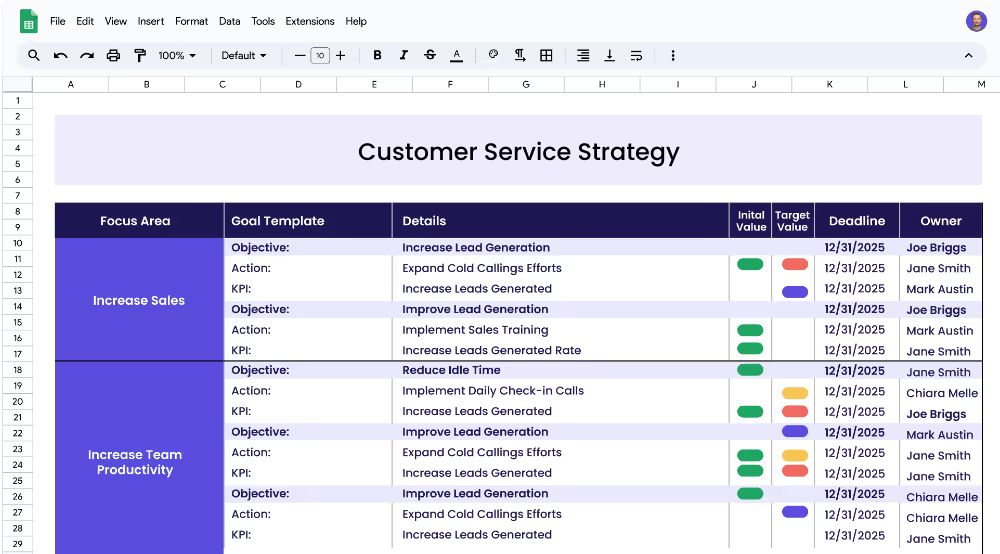A Customer Service Strategy is a plan to handle customer interactions throughout the entire consumer journey as a means of using customer-centric thinking to provide consistent customer satisfaction, build customer loyalty and promote a positive, friendly environment that will leave a great impression on customers.
A customer service strategy is useful for everyone involved in the customer experience and so can be as broad or narrow depending on the layers of the customer journey map that you wish to focus on. Different industries will have different layers of customer service; more automated industries could have more, whilst technological industries may have less. Even though the end goal of a customer service strategy is ideally customer satisfaction, this template is not only applicable to customers, but also to admin staff that deals with processing orders; transportation staff that either act as intermediaries or deliver or receive the orders; technicians that help facilitate a smooth working system; retail staff that sells the product; an after-sales service team that deals with customer inquiries and problems, and handles returns and refunds. It’s important to note that this entire process is overlooked and supervised by managers.
Depending on the layer of the customer journey map you are seeking to improve, you can appropriately devise strategies to work on and improve the service provided in these sections.
It can be easy to think of focus areas by looking at your customer journey map and then narrowing down on the layers you have identified to establish what problem areas your organization specifically needs to resolve or work on.
An example of a focus area for a Customer Service Strategy could be Operational Efficiency.
Focusing on objectives within this area can help you narrow down further into the goals you want to focus on in these areas. The objectives you set can be SMART objectives so that they epitomize clear and succinct end targets for you and your team to work towards.
An example of some objectives that fall under Operational Efficiency can be; Ensure teams, groups, and networks in an organization are sufficiently staffed; Utilize the best technology to deliver customer service goals effectively; Meet customer demand and increase customer retention.
Whilst you can also track and measure the progress of your objectives, it’s also extremely crucial to set up smaller measurements that you can track and measure to monitor your progress.
Examples of KPIs that can measure this objective: Ensure teams, groups, and networks in an organization are sufficiently staffed are Get Average Resolution Time to 75%, Reduce Cost per Call by 30%, and Reduce Customer Callbacks to 60.
You can accordingly set up specific end dates or a time period that you want to achieve these KPIs.
After thinking about some KPIs, you may wonder how can these KPIs actually be achieved? This is where creating some projects becomes extremely useful. Projects can serve as tangible actions that you follow to achieve your end objectives.
Examples of projects that can improve your overall organizational operational efficiency can include but are not limited to: Create a training Investment per Employee, Generate a customer charter, Create an Employee Appraisal scheme, Utilize a Customer Journey Map, Send monthly emails to build customer engagement and Initiate a customer loyalty program.
If you’re ready to accelerate your strategy and see faster results, consider using Cascade Strategy Execution Software. Unlike spreadsheets, Cascade provides an intuitive, all-in-one platform designed to help you create, monitor, and execute your strategic objectives seamlessly. Cascades’s dynamic tools offer real-time updates, centralized collaboration, and automated reporting, ensuring that every level of your strategy is aligned and optimized for success. Sign-up for free or book a demo with one of our strategy experts to enhance your customer service strategy today!


